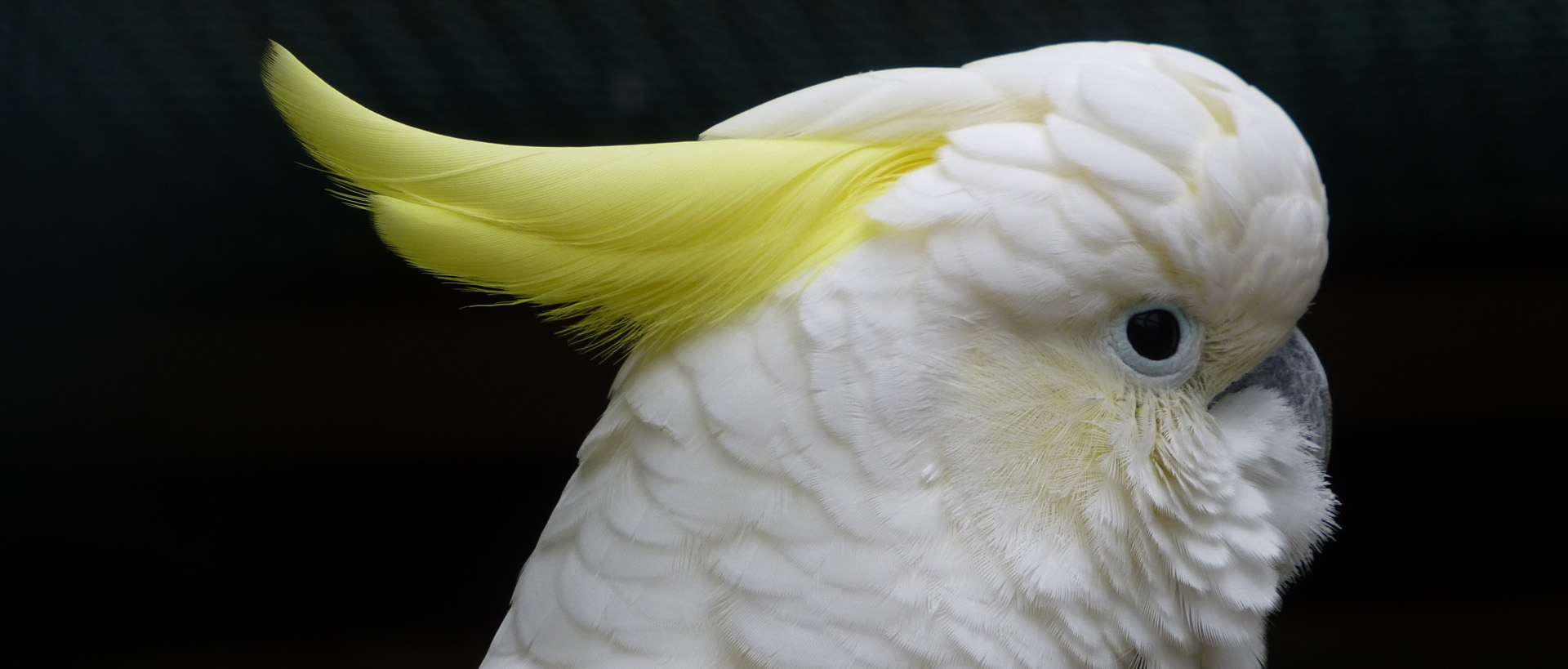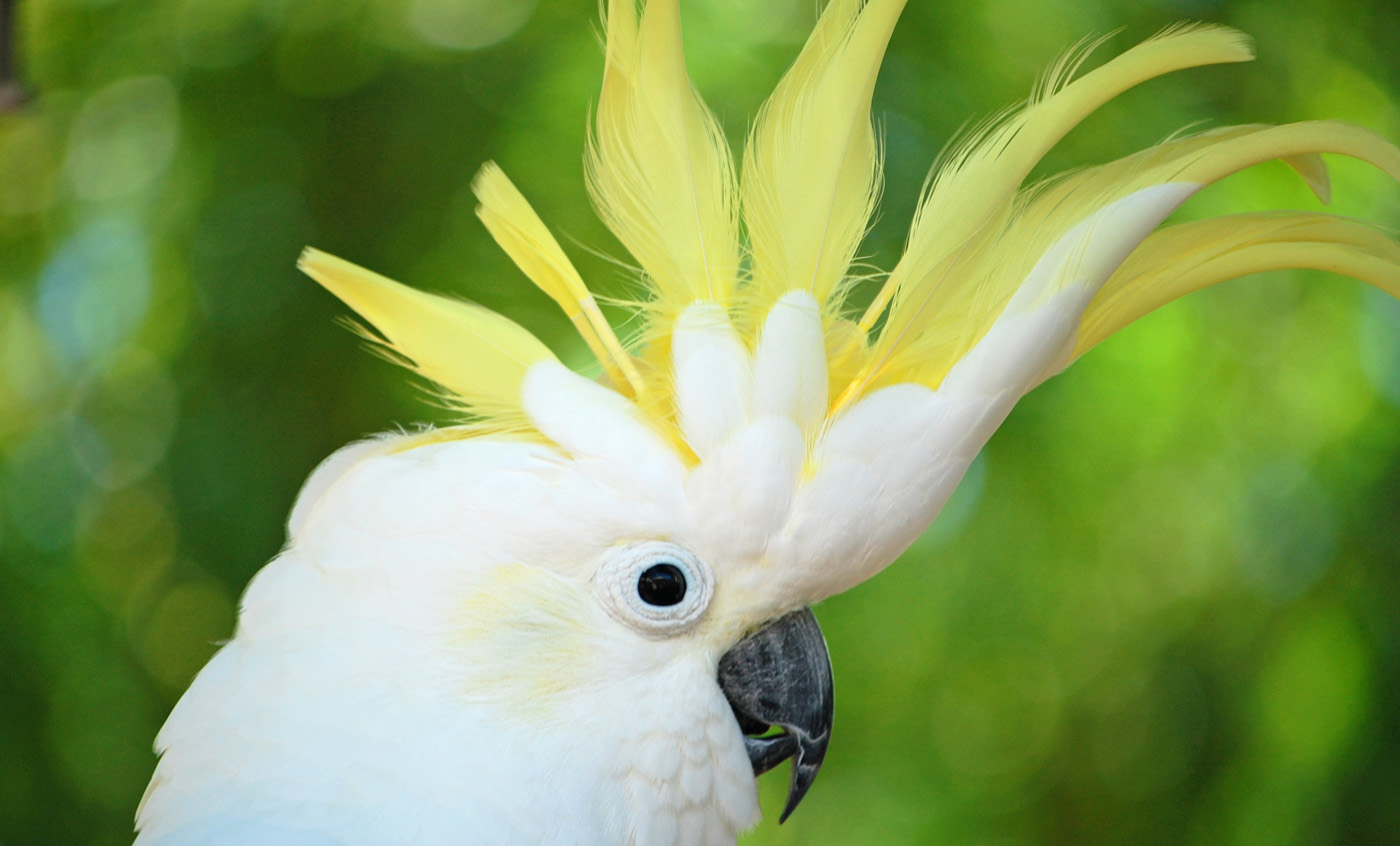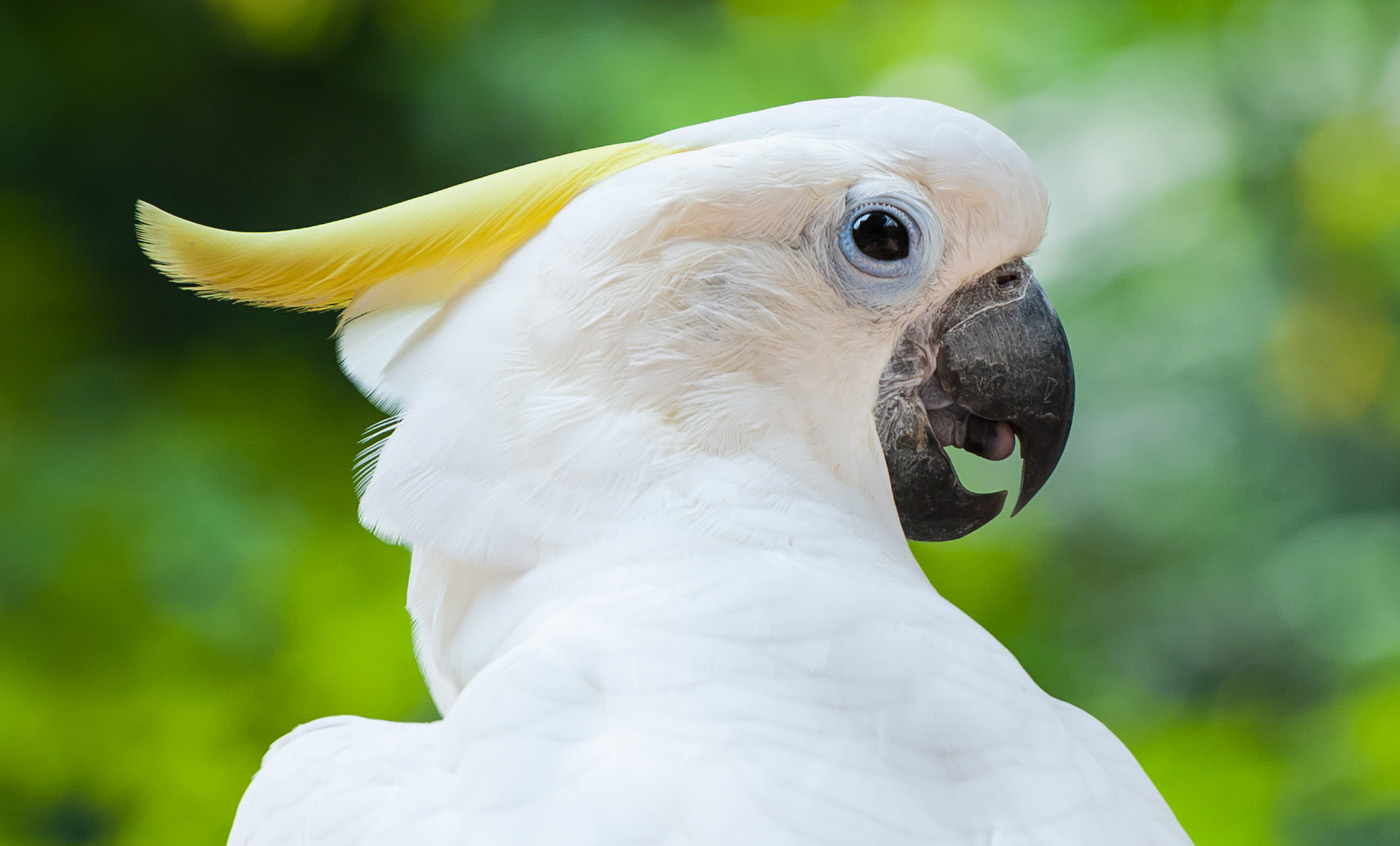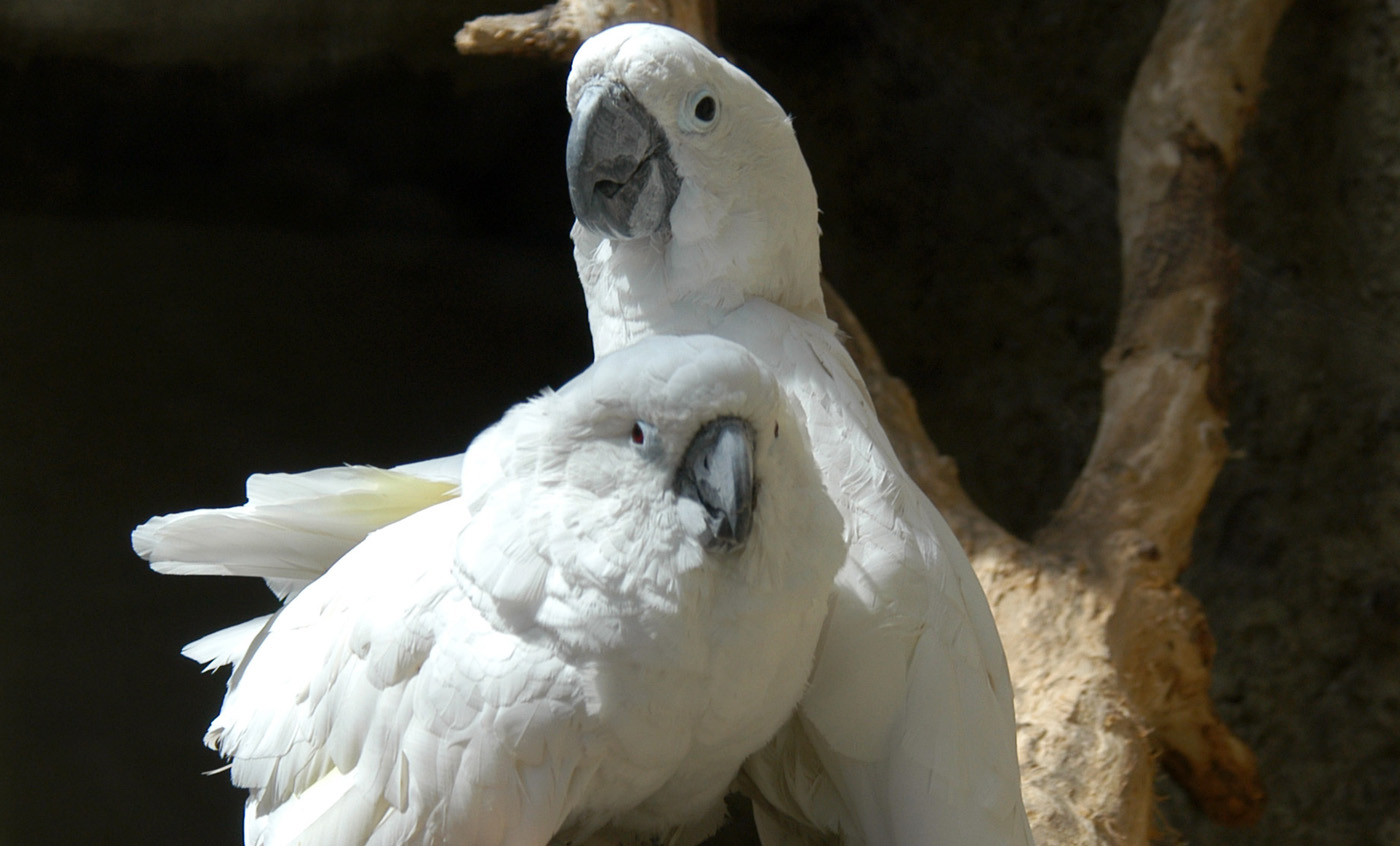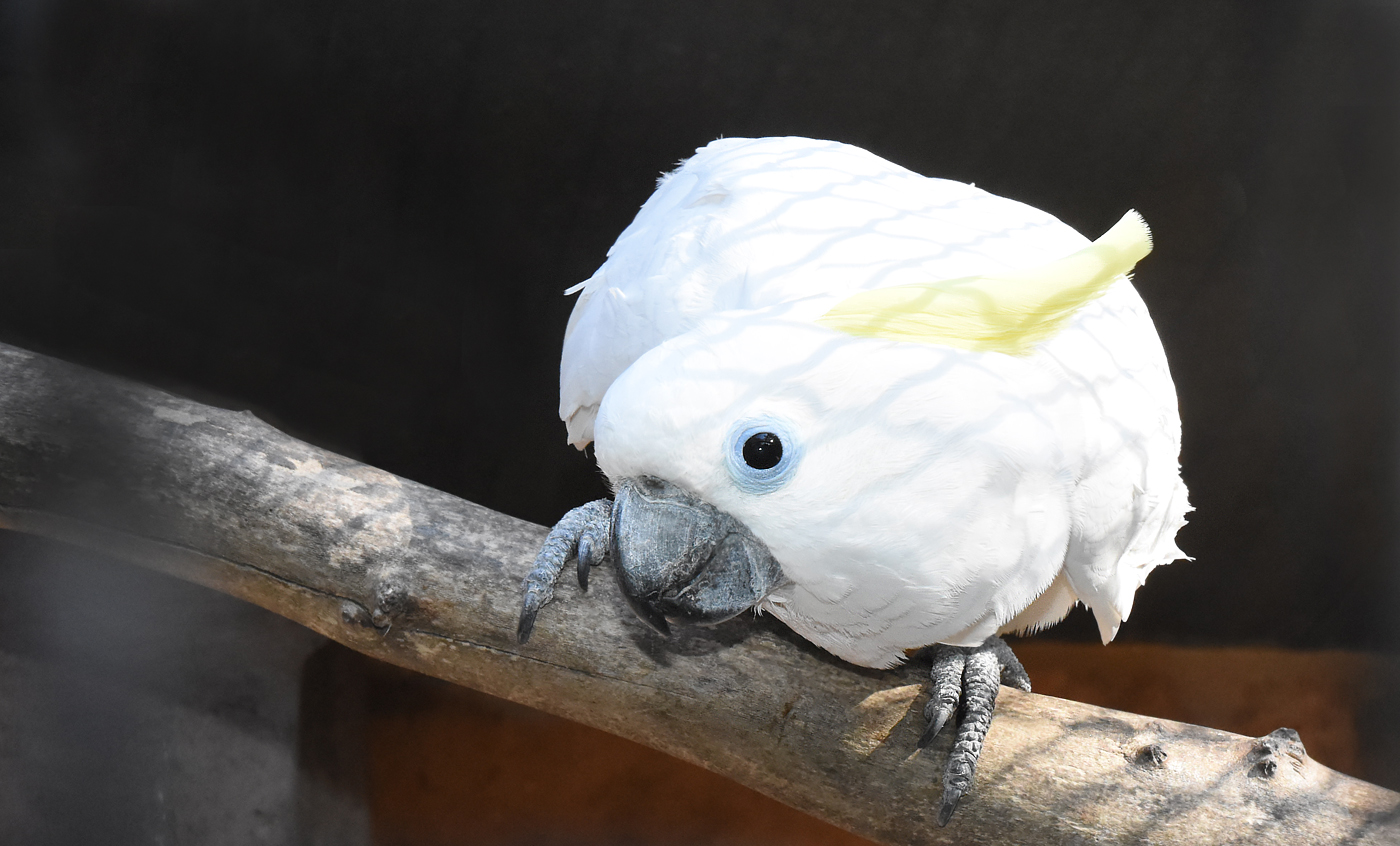Lesser sulphur-crested cockatoo
The lesser sulphur-crested cockatoo is native to Sulawesi, Timor and other Sunda Islands. It lives in open areas with scattered trees, farming land and edges of forests from sea level up to mountainous areas of over 500 metres in height. It nests in holes in trees and is now in serious danger of extinction due to over-capturing for use as a pet.
Natural habit
Sulawesi, Java, Timor and adjacent islands
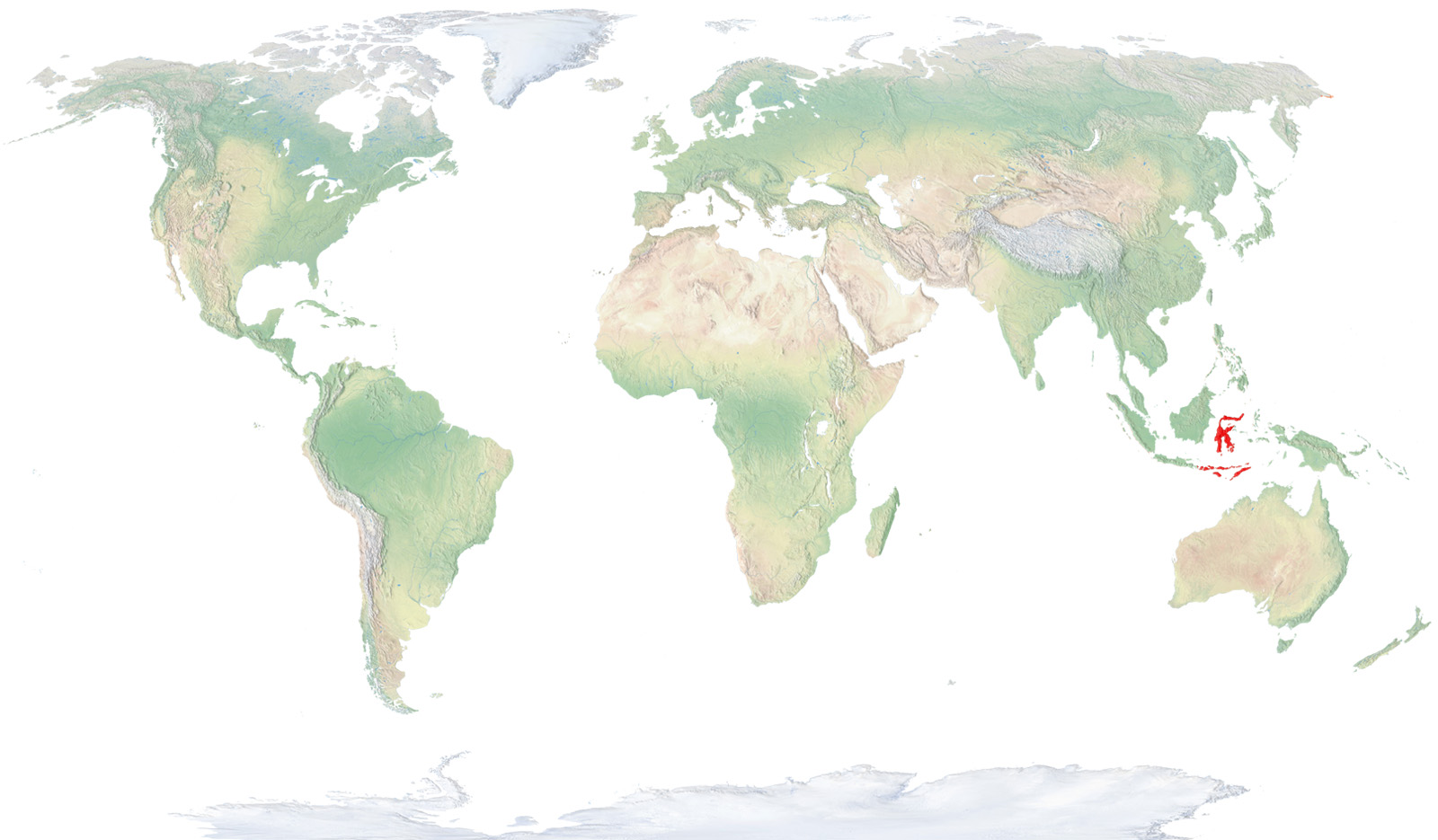
- Distribution / Resident
- Breeding
- Wintering
- Subspecies
Risk level
- Extint
- Extint in the wild
- Critically endangered
- In Danger
- Vulnerable
- Near threatened
- Minor concern
- Insufficient data
- Not evaluated
Taxonomy
Physical characteristics
Biology
Reproduction
Biology
The sulphur-crested cockatoo is a bird in the Cacatua family—in the same order as parrots and macaws, Psittaciformes—that is characterised by its bright white plumage, although the crest, erectile and quite large, is yellow, as well as the ventral area of the tail and cheeks.
It primarily inhabits forests and open fields up to altitudes of 1200 metres on the islands of Sulawesi, Timor and the Sundas.
It mainly eats seeds and fruits.
The breeding season starts in September or October, although very little is known of this aspect of its biology. It builds its nest in holes in trees, padding it with plant matter, where it lays two or three eggs that both the male and female incubate for a period of some 27 days. With regard to its breeding biology, this has only been determined due to specimens in zoos.
The breeding season starts in September or October, although very little is known of this aspect of its biology. It builds its nest in holes in trees, padding it with plant matter, where it lays two or three eggs that both the male and female incubate for a period of some 27 days. With regard to its breeding biology, this has only been determined due to specimens in zoos.
It is critically endangered. Formerly common and quite well rooted in its islands of origin, the indiscriminate capture of specimens for private collections and the pet trade has caused a sharp drop in this species’ numbers, estimated at fewer than 7000 in freedom.



